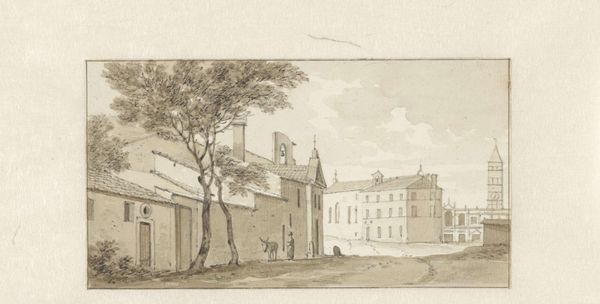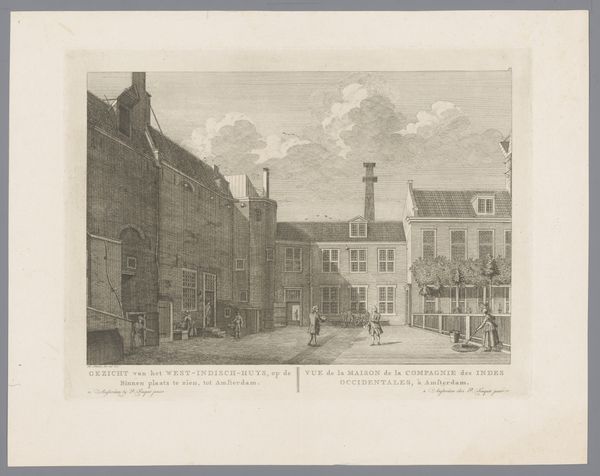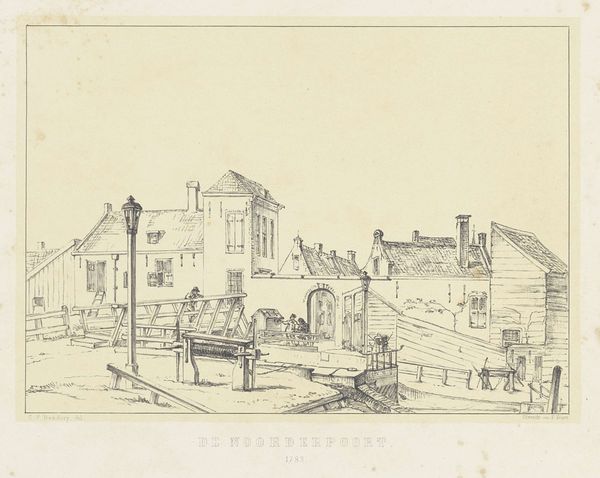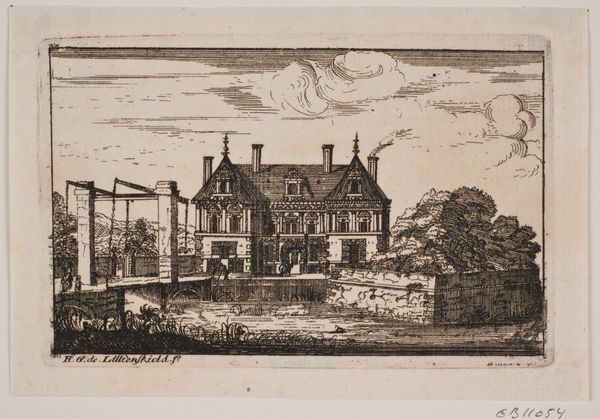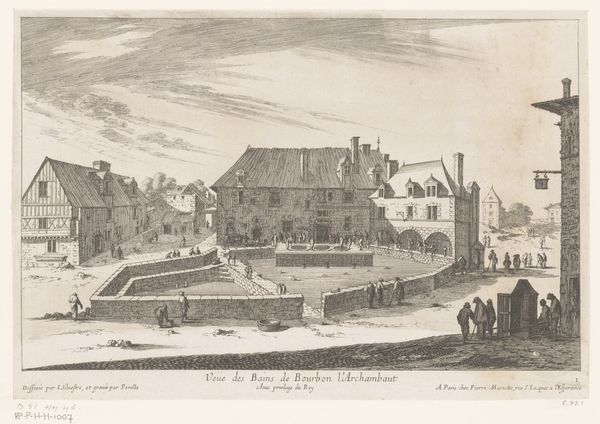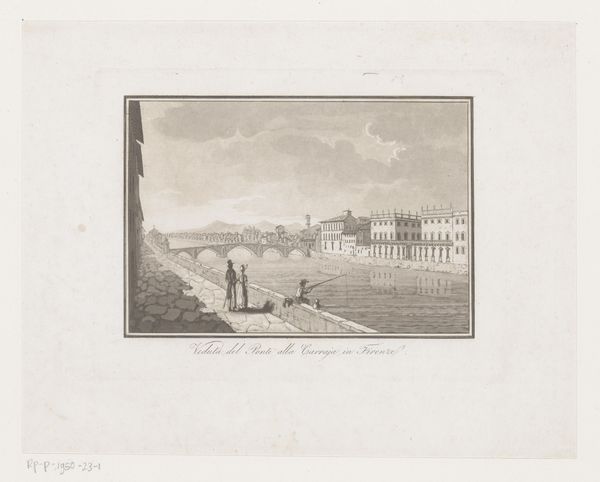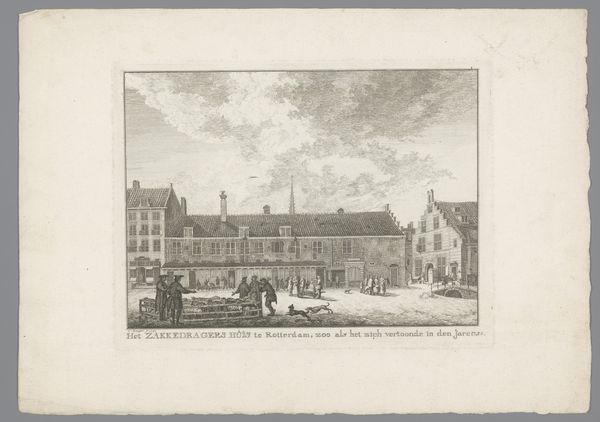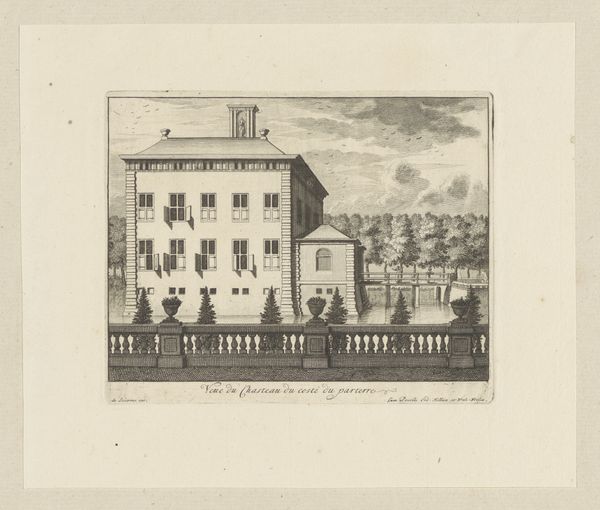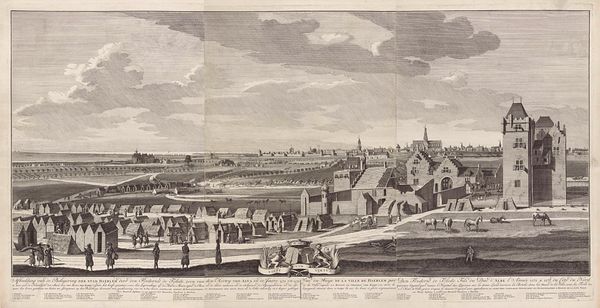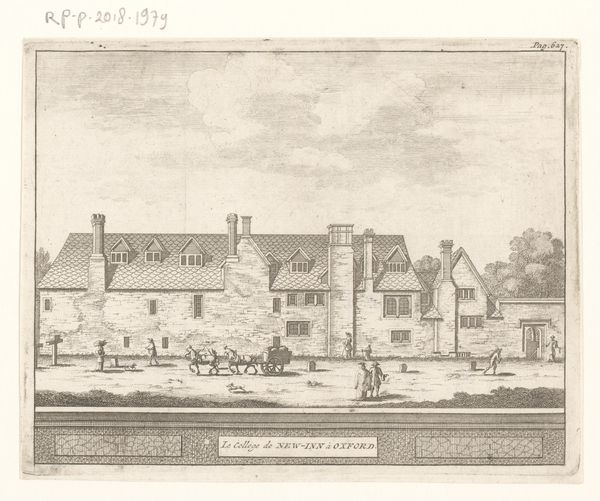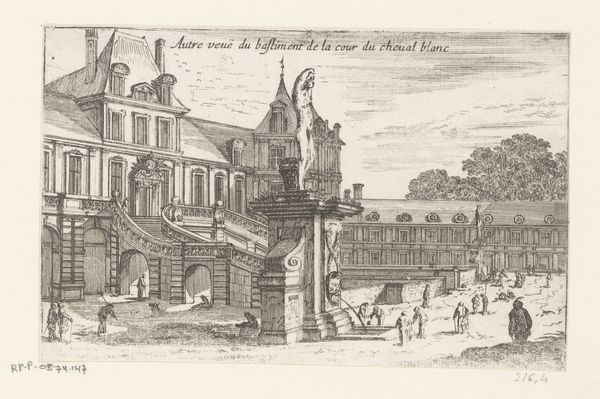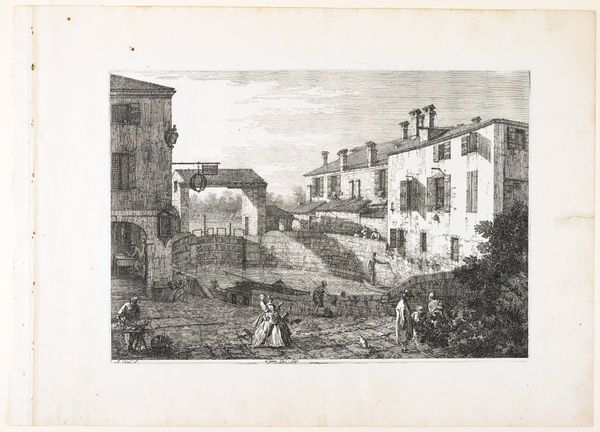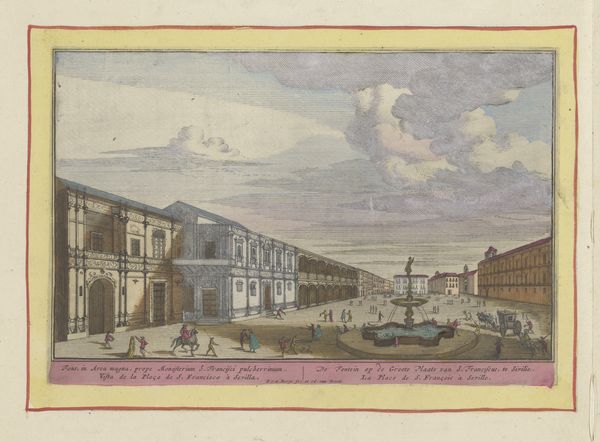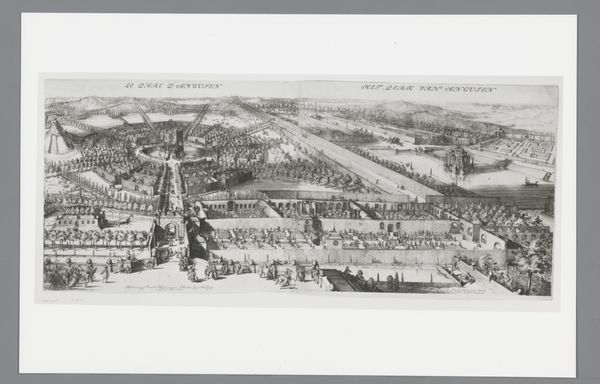
Dimensions: height 165 mm, width 246 mm
Copyright: Rijks Museum: Open Domain
Curator: Welcome to the Rijksmuseum. Today, we are looking at “Huis ter Nieuburch,” an engraving by Kasparus Karsen, dating from 1820 to 1896. It depicts a detailed view of the former palace. Editor: Immediately, I’m struck by the air of faded grandeur. The etching, rendered in these sepia tones, almost feels like looking at a ghost of the past, you know? Like history barely clinging to the paper. Curator: Exactly. Karsen's rendering offers us insights into the Dutch aristocratic landscape during a period of social and political upheaval. This image prompts us to think about themes of power, privilege, and the visual representation of social structures, wouldn't you say? Who held access and maintained this luxurious landscape and at whose expense? Editor: Definitely! It is fascinating to consider who got to stroll these formal gardens. Beyond that, it is impossible to miss how the artist focused on precision, on illustrating structure, yet there’s still this strange quiet to the whole thing, something a bit mournful or nostalgic maybe? Curator: That's a very sensitive observation. One might link it to Romanticism, a prominent movement then. Beyond architecture, its concern lies also with exploring feelings of melancholic reverie, through a connection with historic sites... Perhaps something also akin to grappling with shifting power dynamics? After all, "Huis ter Nieuburch" prompts the question: who has ownership over these historic legacies and which narratives dominate our perceptions? Editor: Well, I just love getting a glimpse of the world from another era! To think that someone walked these same grounds and wondered something very much alike is just wonderfully bizarre and touching, if you allow. It’s a lovely way to remember where we came from! Curator: Indeed, it’s important to understand that a landscape can be more than a picturesque image: here it reveals a layered reflection on class, visibility, and what historical visual accounts choose to represent. Editor: A lot to think about, for sure. Okay, on to the next reverie then.
Comments
No comments
Be the first to comment and join the conversation on the ultimate creative platform.
